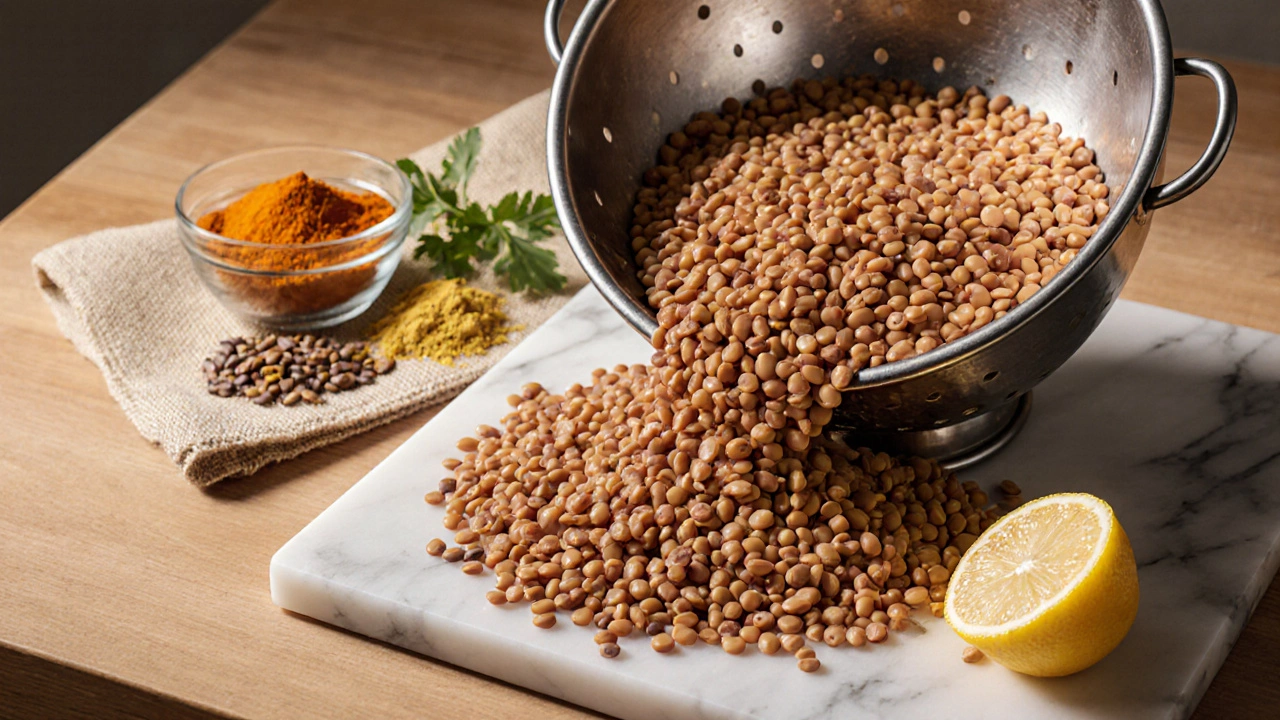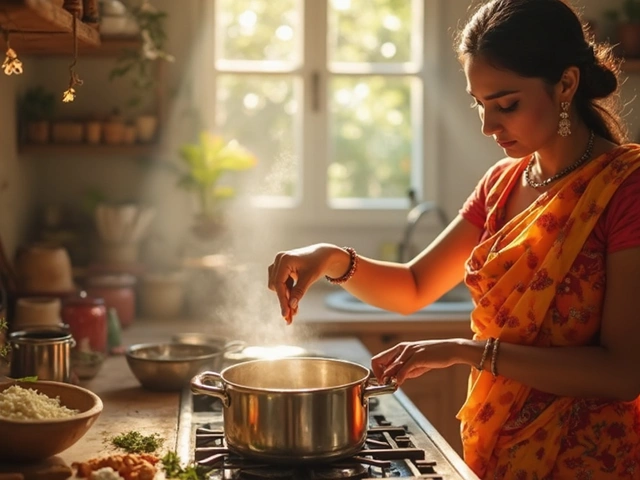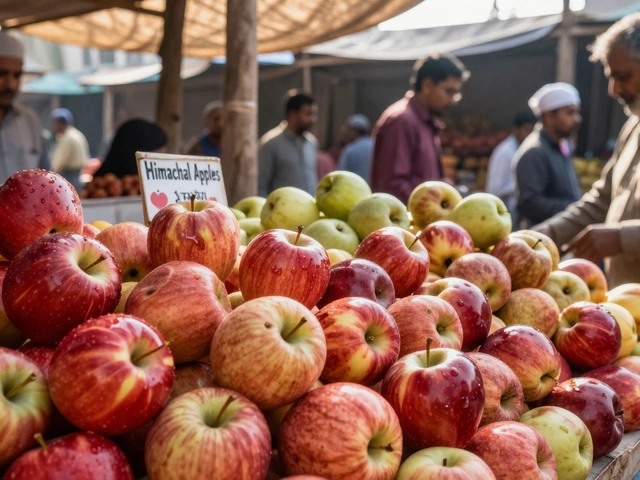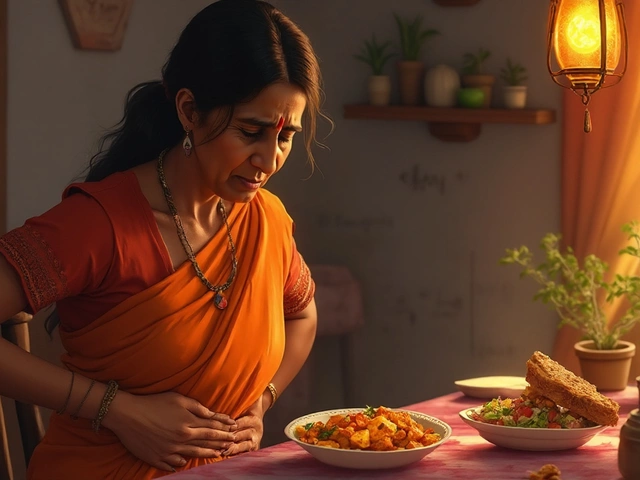Lentil Nutrition Retention Calculator
Maximize Your Lentil Nutrition
Select your cooking method and soaking time to see how much protein, fiber, and iron remains in your lentils.
Nutrient Retention
Protein:
Fiber:
Iron:
When you hear the word “lentils,” you probably think of a hearty bowl of dal or a quick pantry staple. But not all lentil dishes are created equal-some keep the nutrition intact, others add hidden sodium or unhealthy fats. Below you’ll find the science‑backed steps to make lentils the healthiest protein source on your plate, plus a few simple dal recipes that won’t take more than 30 minutes.
Lentils are small, lens‑shaped legumes that pack a punch of protein, fiber, iron, and folate. When cooked properly, they become a low‑glycemic, plant‑based powerhouse perfect for anyone looking to boost nutrition without excess calories.
Why Lentils Rank High on the Health Scale
- Protein power: One cup of cooked lentils delivers about 18 g of protein, rivaling meat‑based servings.
- Fiber boost: Roughly 15 g of fiber per cup supports digestion and steadies blood sugar.
- Micronutrient density: Lentils contain 37 % of the daily iron need and 90 % of the recommended folate.
- Low glycemic index: With a GI of 21-29, lentils cause a slow rise in glucose, ideal for diabetics.
- Versatility: From soups to salads, they absorb any flavor profile-from cumin‑spiced Indian dal to Mediterranean olive‑oil drizzles.
Key Steps for Maximizing Nutrition
Most people skip a few simple tricks that preserve nutrients and cut unwanted sodium. Follow these four steps before you even turn on the heat.
- Rinse & sort: Place lentils in a colander, rinse under cold water, and discard any stones or discolored pieces. This removes dust and potential pesticide residues.
- Soak wisely: Unlike beans, most lentils don’t need long soaking, but a 15‑minute soak reduces antinutrients (phytates) that can block iron absorption. Use a ratio of 1 part lentils to 3 parts water.
- Use low‑sodium broth: If you reach for store‑bought broth, choose “no‑salt added” or make your own vegetable stock. A pinch of sea salt at the end is enough.
- Cook with aromatics, not excess oil: A teaspoon of olive oil or a splash of mustard oil adds flavor without drowning the lentils in fat.
Cooking Methods Compared
| Method | Cooking Time | Protein Retention | Fiber Retention | Iron Loss | Best For |
|---|---|---|---|---|---|
| Stovetop (no‑soak) | 20‑25 min | ≈ 98 % | ≈ 95 % | 5 % | Simple soups, quick salads |
| Stovetop (15‑min soak) | 15‑20 min | ≈ 99 % | ≈ 97 % | 3 % | Dal with spices, creamy sauces |
| Pressure Cooker | 8‑10 min | ≈ 99 % | ≈ 98 % | 2 % | Bulk meal‑prep, busy weekdays |
| Slow Cooker (low‑heat) | 4‑6 hrs | ≈ 97 % | ≈ 93 % | 6 % | One‑pot stews, hands‑off cooking |
Across the board, protein and fiber stay almost untouched. The biggest nutrient to watch is iron, which can leach into cooking water. If you’re cooking without a broth, reserve the cooking liquid and stir it back into the dish to reclaim the minerals.
Flavor Foundations That Keep It Healthy
Indian dal showcases spices that do more than add aroma-they bring antioxidants and anti‑inflammatory benefits.
- Turmeric (curcumin) supports joint health and may improve insulin sensitivity.
- Cumin aids digestion and adds a warm, earthy note.
- Garlic & ginger offer cardiovascular protection and boost immune function.
- Mustard seeds provide a subtle pungency without extra sodium.
Use these spices in moderation; a teaspoon of each per cup of lentils is enough to flavor a serving for two.
Three Simple, healthy lentil recipes to Try Tonight
1. Quick Tomato‑Cumin Dal
- Rinse 1 cup red lentils; soak 15 min, then drain.
- In a pot, heat 1 tsp olive oil, add ½ tsp mustard seeds, wait for pop.
- Add 1 finely chopped onion, 2 minced garlic cloves, and 1 tsp grated ginger. Sauté 3 min.
- Stir in 1 tsp cumin, ½ tsp turmeric, and ½ tsp smoked paprika.
- Pour in 1 ½ cups low‑sodium vegetable broth, 1 cup canned diced tomatoes (no‑salt), and the lentils.
- Bring to a boil, then simmer 12‑15 min until lentils soften. Adjust salt with a pinch of sea salt.
- Garnish with fresh cilantro and a squeeze of lemon.
2. Pressure‑Cooked Green Lentil Stew
- Combine 1 cup green lentils, 3 cups water, 1 bay leaf, and ½ tsp black pepper in a pressure cooker.
- Seal and cook on high pressure for 8 min; quick‑release.
- In a skillet, heat 1 tsp coconut oil, sauté 1 diced carrot, ½ cup chopped spinach, and 1 tbsp grated ginger.
- Add the cooked lentils, 1 tbsp lime juice, and a handful of chopped mint. Stir for 2 min.
- Serve over a small bed of quinoa for a complete protein punch.
3. Lentil & Veggie Salad (No‑Cook)
- Place 1 cup pre‑cooked brown lentils (available in cans or vacuum‑packed pouches) in a bowl.
- Add ½ cup diced cucumber, ¼ cup halved cherry tomatoes, ¼ cup diced red bell pepper, and 2 tbsp chopped parsley.
- Dress with 1 tsp extra‑virgin olive oil, 1 tsp apple cider vinegar, a pinch of black pepper, and a pinch of sea salt.
- Toss gently and let sit 5 min for flavors to meld.
- This salad stays fresh for up to 3 days in the fridge-perfect for meal‑prep.
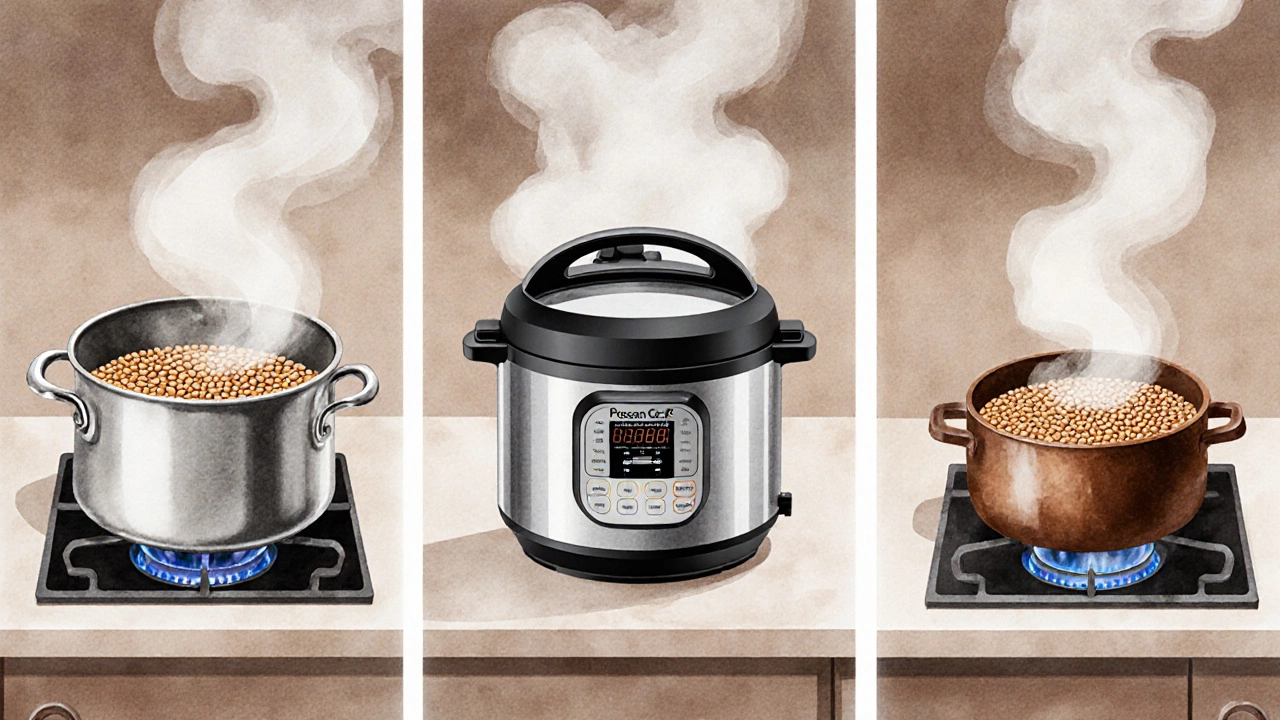
Common Pitfalls & How to Avoid Them
- Over‑cooking: Leaves lentils mushy and can break down some B‑vitamins. Keep an eye on texture; they should be tender but retain shape.
- Too much salt: Sodium spikes quickly when using bouillon cubes. Opt for homemade broth or water and season at the end.
- Skipping the soak: Even a short 15‑minute soak reduces phytates, making iron more bioavailable.
- Relying on canned lentils with added oil: Choose low‑sodium, oil‑free versions or rinse well before use.
Meal‑Planning Checklist for a Lentil‑Rich Week
- Buy a bulk bag of red, green, and brown lentils - each type works best in different dishes.
- Stock spices: turmeric, cumin, coriander, mustard seeds, and dried chilies.
- Prepare a big pot of low‑sodium vegetable broth (you’ll need it for multiple recipes).
- Pre‑portion cooked lentils into freezer bags (3‑cup portions) for quick reheating.
- Pair lentils with complementary proteins like quinoa, Greek yogurt, or paneer for a complete amino‑acid profile.
Beyond Dal: Creative Ways to Use Lentils All Year
When the weather turns cooler, a lentil‑based soup with kale and sweet potatoes keeps you warm and nourished. In summer, toss cooled lentils into a Mediterranean salad with olives, feta, and a drizzle of lemon‑herb vinaigrette. Even desserts can benefit-lentil flour (ground brown lentils) works as a gluten‑free base for muffins and pancakes, adding extra protein without changing the taste.
Quick Recap of the Healthiest Lentil Practices
- Rinse, sort, and soak briefly to improve mineral absorption.
- Choose low‑sodium broth or water; add salt at the end.
- Cook with minimal oil; use spices like turmeric and cumin for added health benefits.
- Prefer stovetop or pressure‑cooking methods to preserve protein, fiber, and iron.
- Combine lentils with whole‑grain carbs or dairy for a full protein spectrum.
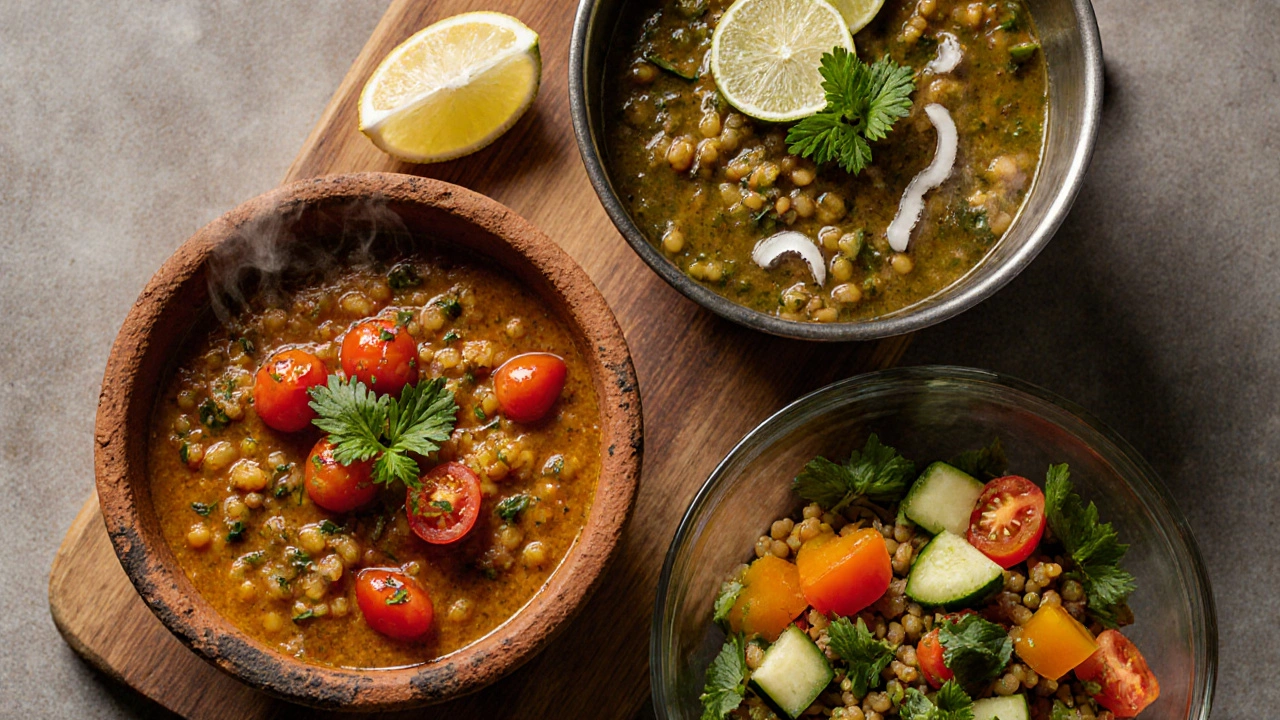
How long should lentils be soaked before cooking?
A 15‑minute soak is enough to lower phytates and improve iron absorption. Longer soaking (up to 2 hours) is fine but not necessary for most red and yellow lentils.
Can I use lentils as a meat substitute in recipes?
Absolutely. Lentils provide about 18 g of protein per cup and, when paired with a grain like rice or quinoa, offer a complete amino‑acid profile comparable to meat.
What’s the best way to store cooked lentils?
Cool them quickly, then transfer to airtight containers. They keep in the fridge for 4‑5 days and freeze well for up to 3 months.
Do spices affect the nutritional value of lentils?
Spices like turmeric and cumin add antioxidants and anti‑inflammatory compounds without adding calories, so they actually boost the health profile.
Is there a difference between red, green, and brown lentils nutritionally?
All three share similar protein and fiber levels. Red lentils cook fastest and are great for purees; green and brown retain shape longer and have slightly higher fiber.





